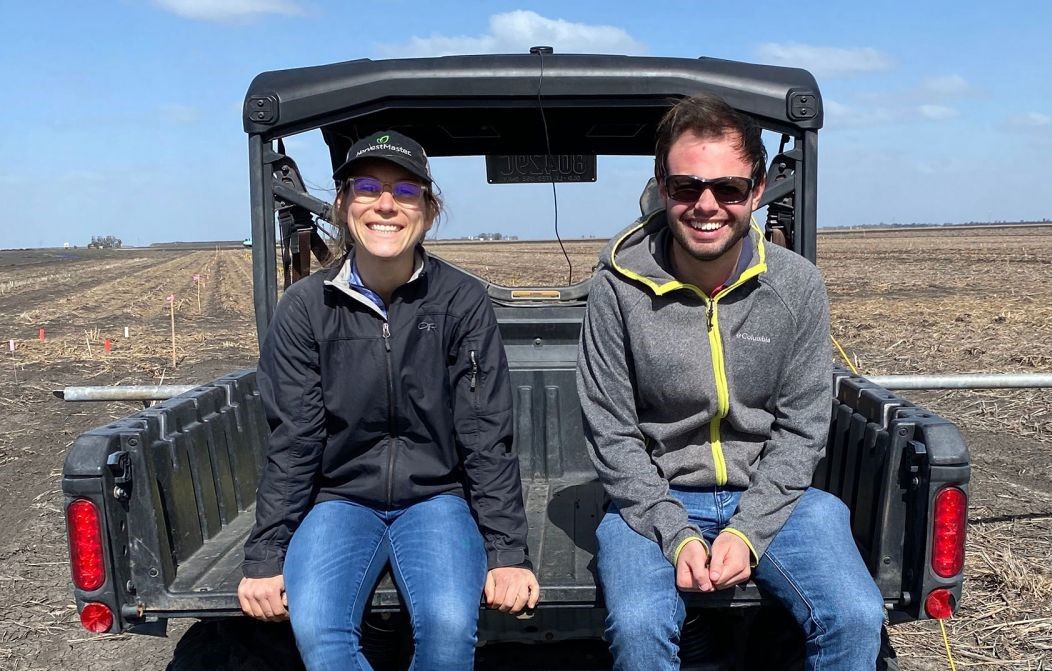A new statistical methodology that ‘untangles’ the effects that different environmental conditions have on field trials could be a game-changer.
Key points
- A statistical method being developed helps untangle the effect that the environment has on agronomic trials
- This will improve trial efficiency and lead to a better understanding of how results translate to different environmental conditions
- It has been tested with data from the Optimising Sorghum Agronomy Program with promising results
When agronomic trials are conducted, trials are repeated across multiple sites or seasons to determine environmental influences on results.
Environmental influence is key in most trials, affecting data interpretation, says principal biometrician Dr Alison Kelly, who is leading the GRDC-supported Statistics for the Australian Grains Industry (SAGI) North team in developing the new approach.

Michael Mumford and Clayton Forknall, from the Queensland Department of Agriculture and Fisheries (DAF) and part of the SAGI-North team, say these environmental characteristics can be measured and incorporated into the analysis.
“We call these factors environmental covariates, and they can include anything from rainfall, soil and air temperature to radiation and evapotranspiration that might vary from season to season or from site to site."
“These environmental conditions are all tangled together. It is hard to unpick them to understand the influence of each one individually,” Mr Mumford says.
Queensland Alliance for Agriculture and Food Innovation (QAAFI) Professor Dr Daniel Rodriguez, who has been working with the SAGI-North team, agrees.
“Researchers roughly know what the interacting factor was,” he says. “This might be: ‘well, one site had less rain so that could be it’. But we want to know more. When did that stress occur, at what stage of the crop, how did that stress impact yield? We want to tease that information out.”
He says the method will better translate trial results, accounting for environmental, management and seasonal factors, and help extrapolate more information from the data. “This work with SAGI is a game changer.”
One of the ‘game changing’ aspects of this statistical methodology is its ability to capture interactions between management practices and environmental covariates. Often the focus of agronomic trials is optimising management of a select few genotypes. This is very different to the plant improvement area where existing statistical methods incorporating environmental covariates have been developed.
Sorghum application
Using data from the GRDC-supported Optimising Sorghum Agronomy Program, Professor Rodriguez identified covariates across six trials, as a mix of phenology measurements (emergence, flowering and maturity), weather data and outputs from the Agricultural Production Systems sIMulator (APSIM), a highly advanced platform for modelling and simulating agricultural systems.
The statistical method was able to explain interactions between the hybrid, time of sowing and plant density using climate variables. This information will help increase capacity to extrapolate agronomic experimentation results across different sites and seasons, increasing the accuracy of the recommendations, and agronomists’ capacity to answer questions with fewer trials.
“This is based on one year of data and will become even clearer when the second and then third year of data becomes available,” he says.
Professor Rodriguez says the method shows what the future could look like when analysing field trials. In this instance it identified key environmental drivers and management strategies that explained the overall genotype by environment by management (G×E×M) interaction. “This enhances the biological understanding of the results and allows for more robust agronomic practice recommendations.”
Efficiency
Trial efficiency and return on scientific investment will be improved with this model, as less data is required over multiple sites and seasons. “The model has the potential to predict ‘new’ untested environments, based on the most influential environmental covariates identified by the model. We are at the early stages of this work,” Mr Mumford says.
The statistical model inks to information generated from APSIM and can also ‘borrow’ information from other trials, again improving efficiency, Mr Mumford says. “Each environment has a different level of variability, with some more variable than others. If that is the case, our model will automatically allocate greater importance to trials that are less variable. It is a clever way of being more efficient.”
More information: Dr Erin Wilkus, Post-doctoral fellow, Centre for Crop Science, QAAFI, E: e.wilkus@uq.edu.au
Statistics help decipher ‘noisy’ agronomic trials - Written By Rebecca Thyer, Published on 12 July 2021 by GRDC Groundcover
The Queensland Alliance for Agriculture and Food Innovation is a research institute at The University of Queensland, established with and supported by the Queensland Department of Primary Industries.

